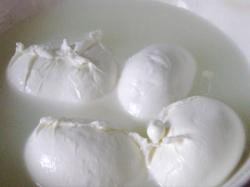Five Stops On A California Cheese Trail
June 4, 2013 | 2 min to read

Marcia Barinaga was showing me and seven other visitors around her ridge-top sheep ranch overlooking the long, slender finger of Tomales Bay and the hills of Point Reyes National Seashore in Marin County, north of San Francisco. As she told us about her flock of 100 East Friesians in a pasture where some of the less timid sheep had gathered around, she bussed the pinkish, wet nose of a ewe. It was an offhand gesture but a telling one, revealing a deep affection for the animals that provide the milk she transforms into cheese in the style of her Basque ancestors.
Barinaga Ranch is one of the several dozen farms and creameries that have made Marin and its neighbor, Sonoma County, the epicenter of California’s lively artisanal cheese movement. Twenty-two thousand acres of land in the two counties are currently used to produce almost 100 different cow, sheep, goat and water buffalo milk cheeses as well as fermented products like yogurt and crème fraîche. The cheeses are all made primarily by hand, in small batches, and in keeping with cheesemaking traditions — hence the artisan designation — and most are also classified as farmstead, meaning they are made on a farm with milk from its own animals.
Ten years ago, when I first made cheese-touring day trips from my San Francisco home to Marin and Sonoma, few creameries were producing cheese, let alone allowing the public a peek. But with the growth in cheese has come increased access. Among the 29 producers listed on a Sonoma Marin Cheese Trail map, Web site (cheesetrail.org) and mobile app, 21 are open for regular or periodic tours and tastings, or for visits by appointment. Guided cheese tours are also popping up, including a five-hour jaunt that includes four creameries, tastings of 30 cheeses, and a picnic ($152; foodandfarmtours.com).
To read the rest of the story, please go to: New York Times
